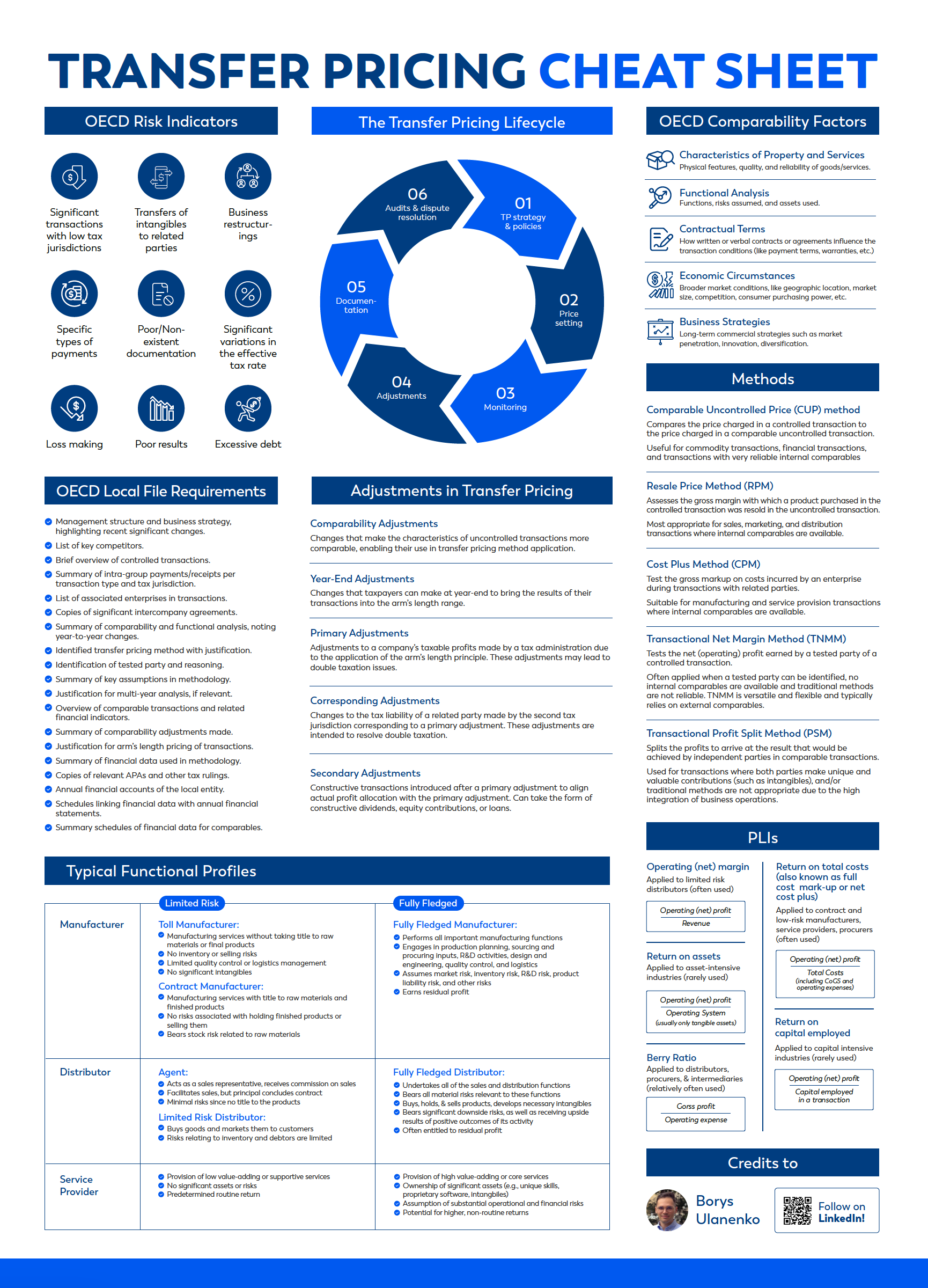
Intercompany agreements are more than just internal contracts; they are essential tools for maintaining fairness and compliance in the business world. These agreements set the rules for transactions between companies under the same corporate umbrella, ensuring that everything is done as if the companies were independent.
This is especially important for meeting legal standards and avoiding tax issues. In this blog post, we'll dive into what these agreements are, why they're so crucial, and how they differ from regular contracts with outside companies. We'll also look at how they help in managing the complex web of transactions within a corporate group, emphasizing their role in keeping things clear, fair, and in line with the law.
Discover the essential concepts of TP in one concise, easy-to-follow cheat sheet.
Quick Reference: Key Transfer Pricing Principles Summarized Have all core TP concepts at your FINGERTIPS
Intercompany agreements, often called "intercompany contracts" and “intra-group agreements”, are legally binding documents that govern the terms and conditions of transactions between companies within the same corporate group. Unlike agreements made with external third parties, these contracts outline the internal sale of goods, provision of services, or sharing of resources between sister companies, subsidiaries, and their parent entities.
The specificity and clarity of these agreements are paramount. They delineate the responsibilities, pricing, and terms of engagement between related corporate entities, ensuring that all transactions are conducted at arm's length – a concept crucial in both legal and taxation perspectives. This internal contractual framework is not just a formality; it is a critical tool for compliance, particularly in the realm of transfer pricing, where tax authorities scrutinize the pricing of cross-border transactions between associated enterprises.
The distinction between intercompany and third-party agreements is a fundamental aspect in corporate law and taxation. While both types of contracts are legally binding, the nature of the parties involved brings about significant differences.
Third-Party Agreements: These are contracts made between entirely separate legal entities. They are typically negotiated with more scrutiny and formality, considering the absence of a common controlling interest. Market-driven pricing, competitive terms, and independent negotiation are hallmarks of these agreements.
Intercompany Agreements: In contrast, these involve entities within the same corporate group. The key here is the ‘arm’s length’ principle, ensuring that the terms and conditions are as if the entities are independent, avoiding preferential treatment. This is crucial for tax compliance, especially in jurisdictions where transfer pricing regulations are stringent.
The challenge in intercompany agreements lies in maintaining this balance, ensuring that while the entities are related, their transactions reflect market realities. This balancing act is not just a legal formality; it’s essential for financial accuracy and regulatory compliance.
Intercompany agreements are more than just internal paperwork; they are a cornerstone of corporate governance and fiscal responsibility. Here are a few reasons highlighting their importance:
Understanding the gravity of these agreements underscores why tax and legal professionals need to approach them with diligence and expertise.
Intercompany agreements can take various forms, each tailored to the specific type of transaction they govern. Here are some common types:
Each of these types is linked to specific intercompany transactions and plays a critical role in defining the nature of these internal business dealings. Getting these agreements right is crucial for legal compliance, particularly in cross-border transactions where transfer pricing rules apply.
Creating effective intercompany agreements involves more than just legal know-how; it requires an understanding of both business operations and tax implications. Here are some best practices:
Adhering to these practices helps mitigate risks related to tax compliance, legal disputes, and operational inefficiencies.
A well-structured intercompany agreement must include certain key components to ensure clarity, compliance, and enforceability. Here’s what should typically be included:
Including these components can significantly enhance the effectiveness and legal robustness of intercompany agreements.
Effective management of intercompany agreements is crucial for ensuring they serve their intended purpose without leading to compliance issues or internal conflicts. Here are some strategies:
By following these management strategies, companies can ensure their intercompany agreements are not only compliant but also contribute positively to the overall efficiency and governance of the organization.
In essence, effective intercompany agreements are not just a legal necessity; they are a strategic asset.
Intercompany agreements are a critical element in the operational and compliance framework of any corporate group. By understanding their importance, ensuring they contain the right components, and managing them effectively, tax and legal professionals can safeguard their organizations against legal and financial pitfalls while enhancing operational efficiency.
Discover the essential concepts of TP in one concise, easy-to-follow cheat sheet.